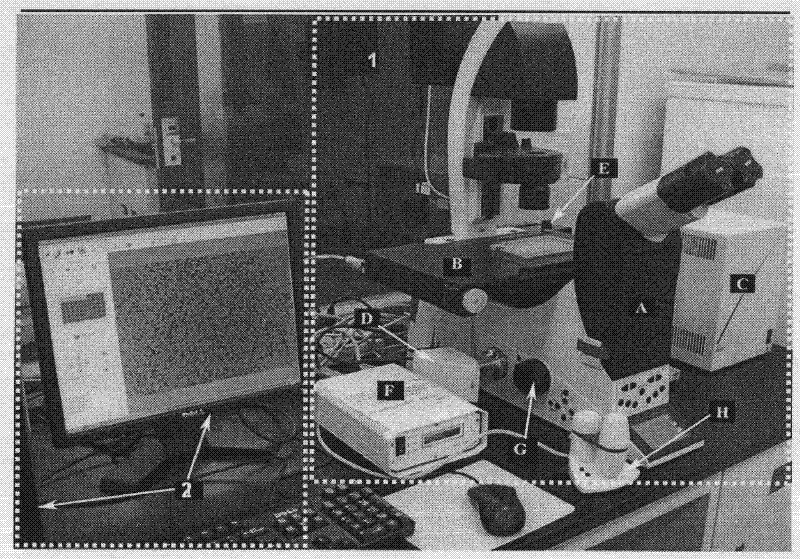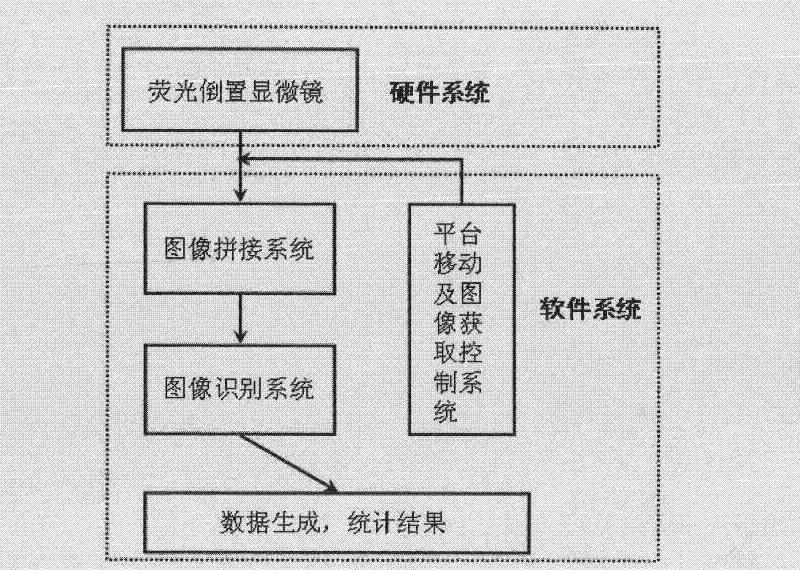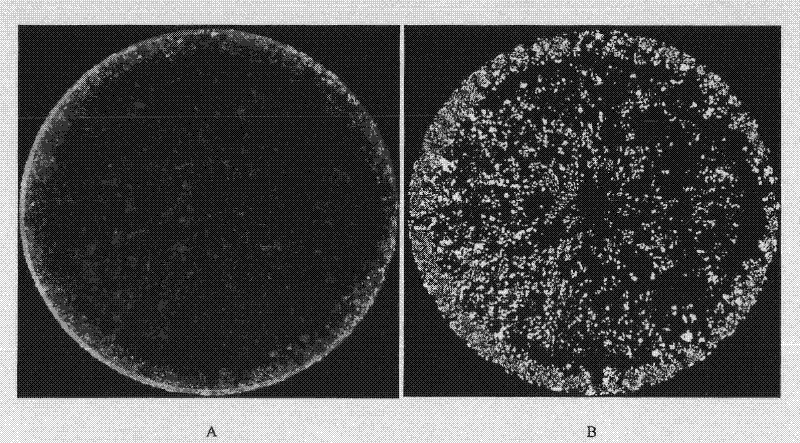Hepatoxic substance sieving and evaluating method based on fluorescence labeling
An evaluation method, fluorescent labeling technology, applied in biochemical equipment and methods, fluorescence/phosphorescence, microbial measurement/inspection, etc., can solve the problem of high price and achieve reliable results
- Summary
- Abstract
- Description
- Claims
- Application Information
AI Technical Summary
Problems solved by technology
Method used
Image
Examples
Embodiment 1
[0052] Example 1 Screening system construction and application to liver toxicity screening
[0053] 1. Hardware and software system
[0054] The purpose of the present invention is to provide a screening and evaluation method for hepatotoxic substances based on the state of fluorescently labeled cells, which is a screening and evaluation method combining hardware / software systems. The screening and evaluation hardware system consists of a German Leica DMI 6000B Composition of fluorescent inverted microscope 1 and computer 2 (see figure 1 ). Fluorescence inverted microscope 1 includes fluorescent inverted microscope main body A, high-precision controllable electric platform B, platform controller C, charge coupler D (1392×1040 pixels, model Leica DFC 310FX, Leica Company of Germany), mercury lamp E, mercury Lamp controller F, coarse adjustment screw G and manual joystick H, platform controller C is connected to microscope body A through wiring, charge coupler D is connected t...
Embodiment 2
[0071] Embodiment 2 Fluorescent image recognition processing
[0072] The fluorescence image recognition system is mainly to process the fluorescence images obtained by the fluorescence microscope, so that the cell biological information is converted into data and the results are visualized. The specific processing steps are background signal subtraction of fluorescent images, binarization processing, and data statistics to generate reports. Through the processing of these three steps, the fluorescent signals that cannot be distinguished by the human eye can be visualized, the recognition sensitivity is high, the detection limit is low, and the fluorescent images are processed automatically in batches, and the results are faster and more stable, and are multi-parameter ( Provide number, area, and fluorescence intensity). For the identification diagram, see image 3 , where panel A. FDA-stained HepG2 cells in whole wells of a 96-well plate; panel B. after image processing.
Embodiment 3
[0073] Example 3 Based on this hardware and software system, the FDA staining and labeling of living cells is used in the dose-effect test of the toxicity of two compounds of acetaminophen and chlorpromazine hydrochloride to liver cells
[0074] HepG2 cells and L-O2 cells were seeded in 96-well plates at a density of 3000 cells per well, and the medium was changed the next day. Compounds acetaminophen and chlorpromazine hydrochloride were selected as positive damage controls, and concentration gradient experiments were performed. Paracetamol was diluted to 9 concentrations starting from 13.65 mM, and chlorpromazine hydrochloride was diluted to 9 concentrations starting from 163.5 μM, and each concentration was replicated in triplicate. Compounds were incubated with cells in a cell culture incubator for 48 hours. In a dark room, discard the culture medium in each well, add 100 μL / well PBS containing 2.5 μg / mL FDA, and incubate at room temperature (25°C) for 15 minutes, and then ...
PUM
 Login to View More
Login to View More Abstract
Description
Claims
Application Information
 Login to View More
Login to View More - R&D
- Intellectual Property
- Life Sciences
- Materials
- Tech Scout
- Unparalleled Data Quality
- Higher Quality Content
- 60% Fewer Hallucinations
Browse by: Latest US Patents, China's latest patents, Technical Efficacy Thesaurus, Application Domain, Technology Topic, Popular Technical Reports.
© 2025 PatSnap. All rights reserved.Legal|Privacy policy|Modern Slavery Act Transparency Statement|Sitemap|About US| Contact US: help@patsnap.com



